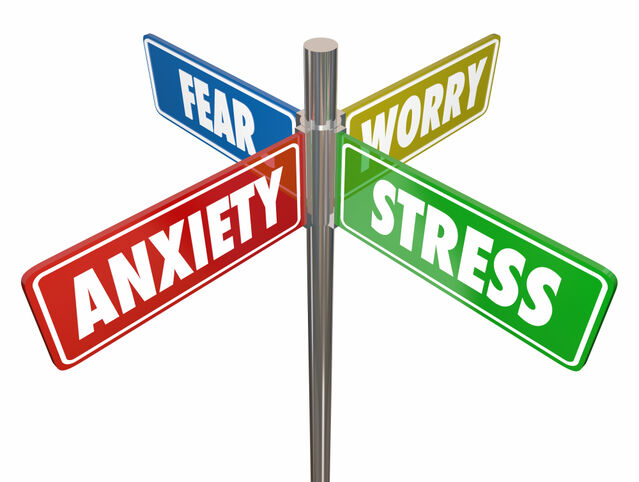Anxiety
A Simple Way to Become Less Anxious and More Self-Accepting
Here's a way to transform avoidance into acceptance and feel more fully alive.
Posted July 3, 2022 Reviewed by Jessica Schrader
Key points
- It's natural to want to avoid uncomfortable feelings, to distract ourselves from distressing thoughts and emotions.
- Avoidance has a price. It can lead to anxiety, depression, anger, and a feeling of not being fully alive.
- A simple technique can help us transform avoidance into greater self-awareness and self-acceptance.

In this post, I’m going to share a simple yet powerful technique for learning to sit with, and tolerate, difficult feelings and thoughts. It’s a simple method of getting to know ourselves better, and making room for the parts of ourselves we have pushed away or lost touch with because they seem, or once seemed, too uncomfortable or threatening.
On a lighter note, it’s also a helpful technique for slowing down during times of stress or conflict, checking in with ourselves at the end of a hectic day, and reconnecting with our calmer, more grounded self. Although this post is primarily about how to use this technique for personal growth and psychological healing, it’s also a wonderful addition to any mindfulness practice, and a nice way of moving beyond breath-focused meditation. If you find yourself constantly checking social media on your phone or laptop, this technique can be a helpful way to slow down, quiet your mind, take a distraction break, and maybe even discover what you're trying so hard to stay distracted from.
Avoidance: a brief detour
Before I describe the technique, it may be useful to make a quick detour into the concept of avoidance.
There’s an interesting point of overlap between western and Buddhist psychology in their explanations of the root causes of suffering. One of the key sources of persistent suffering is what western psychology calls avoidance, and Buddhist psychology refers to as aversion. Avoidance usually starts out as a survival strategy, and it helps us get through painful and frightening experiences by blocking off feelings that are just too overwhelming to experience safely.
But avoidance comes at a cost: it takes enormous energy to hold powerful feelings at bay, and they may continually threaten to surface, causing us to experience anxiety, depression, or anger that gets in the way of our capacity to enjoy life. Once we start walling ourselves off from painful feelings, we may also start to lose access to positive feelings too. Gradually, we may feel less and less fully authentic and alive.
It's the most natural thing to want to avoid emotional pain. Grief, terror, shame, helplessness … these are powerful and deeply uncomfortable emotions. When they are sufficiently intense, they may feel like more than we can tolerate. If you’ve ever experienced intense grief in the wake of a powerful loss, or the terror that results from traumatic experiences, then you know just how overwhelming such feelings can be. It’s the most natural thing in the world to wall off such feelings, to continually distract ourselves, to block off as much as possible the memories and emotions that cause us distress or threaten to overwhelm us. It can even feel like a matter of life and death, a question of survival.
For children, especially, powerful emotions of fear, grief, and shame can be overwhelming and too intense to handle on their own. Without the help of a loving and supportive adult, kids will do anything to turn off intensely painful emotions: they will split off parts of themselves that carry these feelings (dissociation), engage in self-harm or become angry and aggressive, develop obsessive thoughts and compulsive rituals, or adopt a host of other strategies aimed at helping them cope with—and stay distant from—the feelings they are so frightened of. As they grow into adolescents, they may turn to numbing themselves with alcohol and other drugs, constantly distract themselves online, use cutting or other forms of self-harm to substitute a controllable source of pain for the overwhelming emotional pain they are avoiding, and to break through the sense of numbness that comes from blocking out the capacity to feel.
Eventually, as adults, they may experience what feels like an internal civil war between split-off parts of themselves who want conflicting things: attachment and intimacy, a desire to be seen and accepted, in conflict with a desire to stay distant from other people in order to avoid any further pain.
At the heart of all of these coping behaviors is a fundamental survival strategy: avoidance of feelings that are too painful and frightening to tolerate safely.
And now back to that simple technique I mentioned at the start of this post. I call it “What am I aware of now?” and its purpose is to help us safely and carefully become aware of whatever uncomfortable feelings, memories, and beliefs we may be avoiding. This in turn allows us to see what feelings we might need to make space for, what's worrying us, what parts of us are calling for attention, what old fears have gotten triggered, or what old and unhelpful beliefs we might finally be ready to let go of.
The technique
Begin by sitting in a quiet and private place. If you have a timer, set it for five or 10 or 15 minutes, as a way of putting some limits around the experience. Take a couple of minutes to get grounded: try inhaling to a count of three, and exhaling a bit more slowly to a count of four or five. This will slow down your heart rate, and shift you into a slightly more relaxed (“parasympathetic”) state.
Then, ask yourself gently, “What am I aware of ?”
You may first become aware of sounds and visual stimuli in your environment. That's fine, but after a couple of moments, shift your attention to your body: what are you aware of as you gently focus your attention on your body? Is your posture open, or closed? Is any part of your body feeling tense or uncomfortable? Sit with the tension, notice it, and don’t fight it. Is there a tightness in your jaw, chest, or stomach? Accept whatever you notice with curiosity, and without judgment.
You may also notice thoughts and feelings. Whatever they are, adopt a curious, accepting attitude towards them, welcoming them without letting them take over or pull you out of this stance of a gentle, curious observer. No need to push anything away, nor to get lost in it. Your goal is to become aware of whatever sensations, feelings, and thoughts arise.
Whenever you find yourself pulled away by thoughts or fantasies, or getting overwhelmed by powerful feelings, you can either repeat the question “What am I aware of ?” or return to the simple breathing pattern you began with, to reground yourself.
Staying present with the feelings, sensations, and images that arise is the hard part of this experience. It's when our impulse for avoidance is most likely to get activated. We may suddenly remember an email we need to write, a text we should respond to, something we need to take out of the freezer to thaw for dinner. These thoughts all share what I call an illusion of urgency, a false but powerful sense that "I must stop what I am doing right now and attend to this urgent task." Rarely is the task anything that can't wait a few minutes, and often, it's simply the fearful part of our mind seeking to get some distance from whatever feelings, sensations, and images we are sitting with. Just make a mental note of whatever is so urgently pulling you away from the present moment, and bring your attention back by repeating the question "What am I aware of?"
This simple technique will help create a small but powerful space between your adult, observing self and the inner experience you are observing. The process of creating this small separation between the observing adult and the emotional experience we are observing has various names: unblending in internal family systems (IFS) therapy, and defusion in Acceptance and Commitment Therapy (ACT). Unblending gives us an essential bit of distance from what we are experiencing so that we can see it clearly without being immersed in it or overwhelmed by it. Unblending will enable your competent adult self to listen and respond with comfort, compassion, and reassurance to the parts of you who are distressed. It will increase your awareness of your own inner experience, and slowly reduce any tendency you might have to avoid difficult emotions.
Sometimes, creating this gentle awareness is enough to help us feel more relaxed and in touch with our inner experience. At other times, we may want to work with whatever we become aware of. In her discussion of the RAIN model in her wonderful book Radical Compassion, Buddhist psychologist Tara Brach describes the steps of Recognize, Accept, Investigate, and Nurture, which begin with her version of this awareness technique. I don’t much care for the term investigate—it sounds too intellectual and cold to me; I prefer explore, and that’s what I encourage my clients to do: once they are sitting with awareness of difficult feelings or sensations, I invite them to explore with a gentle heart what they see or feel or sense. Do the feelings or sensations belong to a younger part of themselves? Can they see this part? How old is the part? Can they sense or see what the part is needing from them? Can they see or sense what current event or experience has triggered these feelings or sensations? Responding with compassion and reassurance to the reactions or unmet needs of the younger parts of ourselves is the nurture part in the RAIN model, and it’s a core part of therapeutic models such as IFS of "parts" therapy. It’s also something we can do on our own, and it all begins with a simple question: “What am I aware of?”
Suggested readings:
- Tara Brach, Radical Compassion
- Janina Fisher, Healing the Fragmented Selves of Trauma Survivors.
- Russ Harris and Steven Hayes, ACT Made Simple
- Richard Schwartz, No Bad Parts




